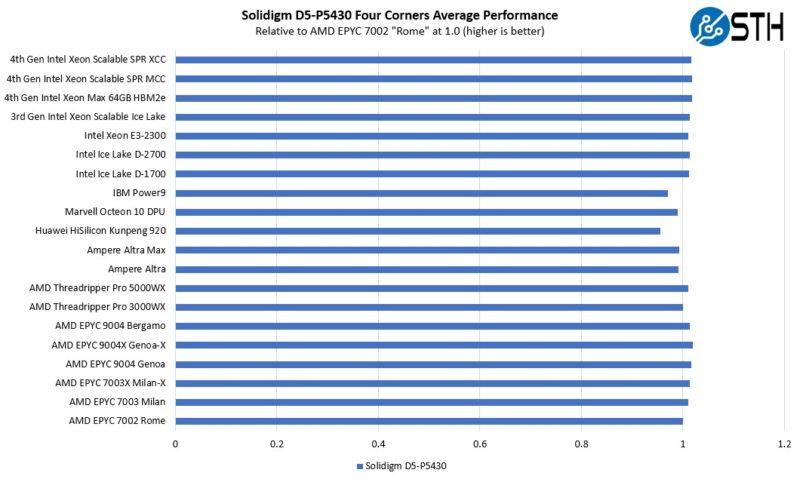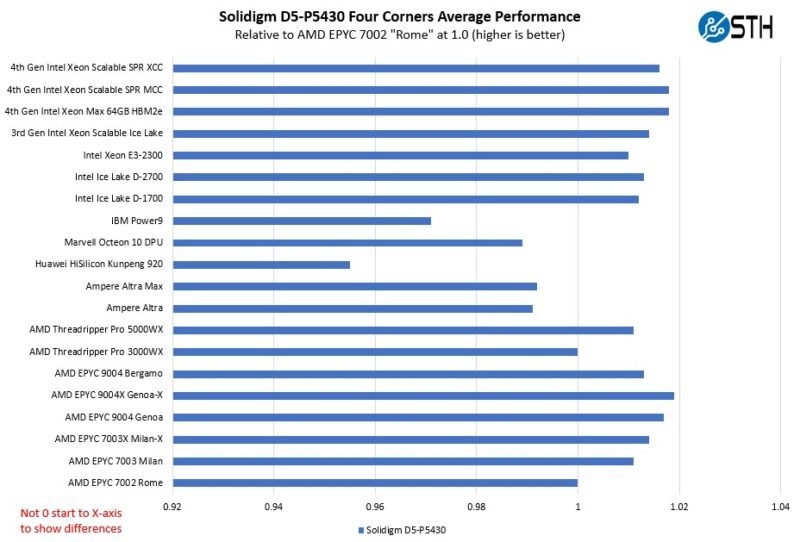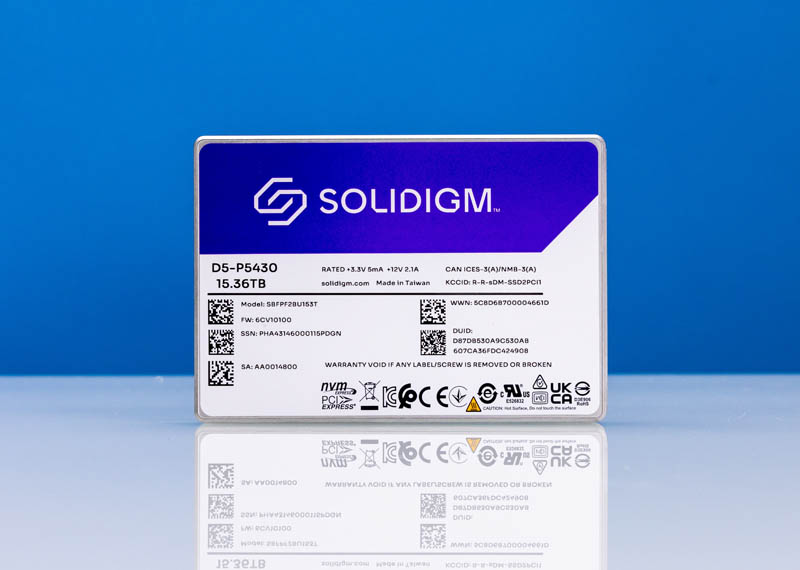Performance by CPU Architecture
If you saw our recent More Cores More Better AMD Arm and Intel Server CPUs in 2022-2023 piece, or our pieces like the Supermicro ARS-210ME-FNR Ampere Altra Max Arm Server Review, Huawei HiSilicon Kunpeng 920 Arm Server piece, you may have seen that we have been expanding our testbeds to include more architectures. This is in addition to the Ampere Altra 80 core CPUs that are from the family used by Oracle Cloud, Microsoft Azure, and Google Cloud. We also managed to test these on the newest generation AMD EPYC Bergamo and Genoa-X SKUs.

Here is the zoomed-in non-zero scale version of the chart:

Overall, the performance of the drives follows some key trends. Still, it is important to note that architecture matters if you want to maximize SSD performance. These numbers are in the same general shape as we saw from the DapuStor SLC-NAND SSD review, but there are differences based on the platform.
We noted a similar pattern with the Intel Xeon W-3400 series and the W-2400 series as we saw on the Sapphire Rapids parts. This makes sense given they are the same underlying chips. One slight difference is that we saw the top-end 56-core Intel Xeon w9-3495X in the Falcon Northwest server/ workstation performed better when it was in its full 1.5kW performance mode. Since that is a specialty platform, we are going to leave it out for now but you can learn more about the platform here.
One may also note that not only is this our second SSD review with AMD EPYC Bergamo, Genoa-X, and the Intel Xeon Max 9480.
There are now many new architectures on the market, so it is fun to keep growing the list.
Final Words
The Soldigim D5-P5430 is really interesting. It is slower than many of the smaller or performance-focused drives, but it is still in the ballpark. At the same time, we have most of the data for the D5-P5336 (testing in 21 systems takes a long time) and while that 61.44TB drive is larger in its capacity, it is not as fast as this D5-P5430.

Overall, this is one of the more interesting SSDs out there. We have a number of 30-32TB SSDs at this point, and both the 15.36TB and 30.72TB versions of this drive are intriguing. That capacity point allows these drives to start competing and beating hard drives in terms of density and reliability, while also offering better performance. We have a number of new SSD reviews coming and we will keep you posted with the results as they come in.



Why?
Bring back MLC!!! I still use Intel drives I bought ages ago.
“Solidigm is on a major push right now to phase out a new wave of hard drives from the data center.”
This sentence reads very awkwardly. Are they trying to phase out hard drives in the datacenter by replacing them with SSDs? Are they trying to phase in a new wave of hard drives? If so, why is the article about SSDs, not hard drives?